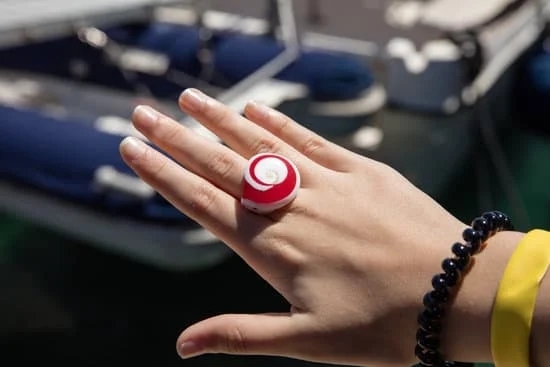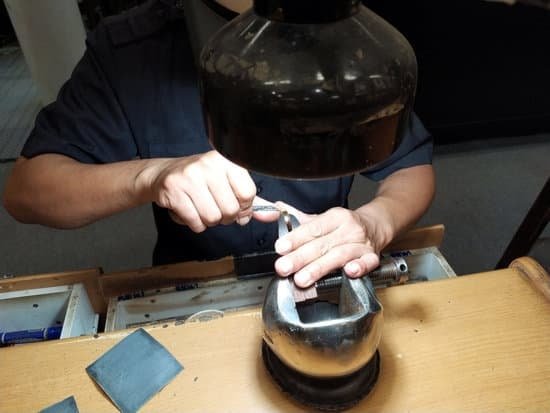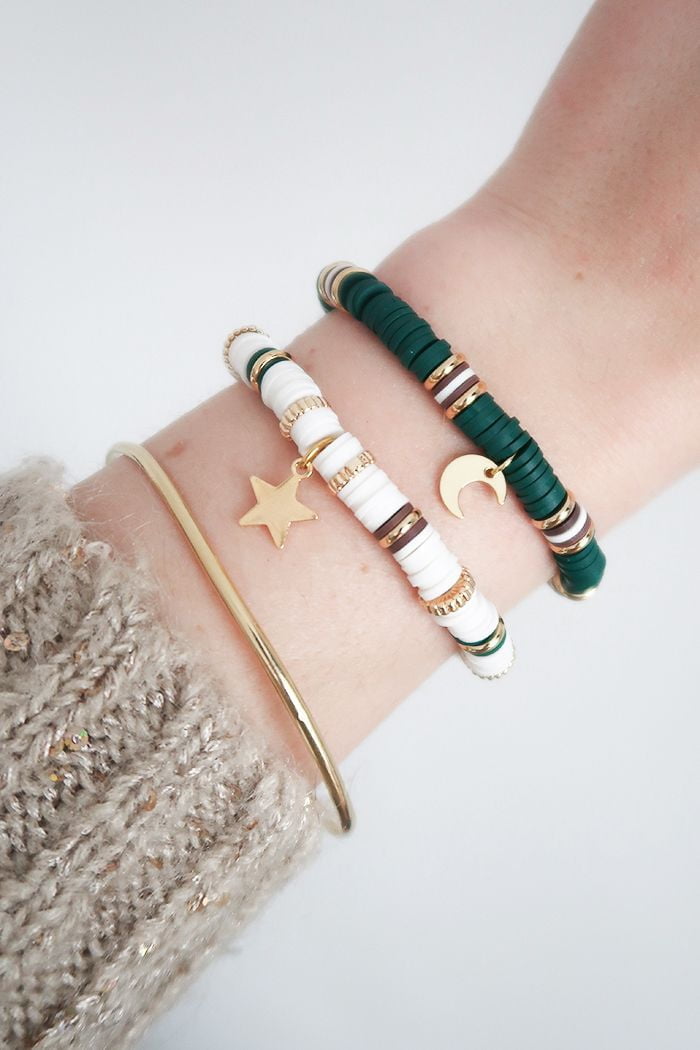Jewelry making with sheet metal is an enjoyable and relatively easy craft that can be done at home by beginner and more experienced crafters alike. Sheet metal provides a material that can be shaped, stamped, or cut into beautiful pieces of jewelry to be worn and admired.
The most common type of sheet metal used in jewelry making is sterling silver, though copper and brass are also popular choices. Using a few simple tools, you can create intricate pieces that look expensive but can often be crafted on a budget.
Gathering the Necessary Tools
When it comes to creating jewelry out of sheet metal, certain tools are necessary to get started on your journey. One needs wire cutters, needle nose pliers, files or sandpapers containing different grit levels as well as hammers or mallets to accessorize their design according to the desired outcome.
Other ideal tools for achieving flawless jewelry pieces include a ring mandrel for forming rings and stamping sets for professional-looking impressions. Even the basic set of tools mentioned above will provide everything you need to create stunning jewelry items out of sheet metal.
Creating Sheet Metal Jewelry
Now that you have all the necessary supplies, it’s time to make some incredible jewelry using sheet metal. Beginners may want to start off with simple projects such as rings or earrings before moving onto larger pieces like necklaces and bracelets. That said; there are so many amazing possibilities when creating with sheet metal due to its flexibility.
Depending on how creative one gets depends on what kind of project they pursue with this versatile material. Many crafters enjoy putting symbols and inspirational words onto the piece while others prefer literal shapes reminiscent of actual objects present in nature or animals reminding us of our connectedness in this world.
Once the design is complete one should remember not only apply sealants against tarnishing but also file any rough edges found in order to ensure all safety concerns have been taken into account.
Sheet Metal in Trendy Jewelry Designs
Sheet metal is an incredibly versatile material that can be used to create all sorts of interesting jewelry pieces. Jewelry makers have been able to take advantage of sheet metal’s malleability and light weight to craft beautiful pieces like earrings, necklaces, and bracelets. The advantages of sheet metal over other materials make it perfect for those who enjoy making their own jewelry.
One benefit of using sheet metal in jewelry designs is the range of options available. Sheet metal comes in a wide variety of thicknesses and textures, so individuals can easily find something to suit their style. For example, someone looking to create a delicate looking piece may opt for thin, hammered sheets while someone else wanting to create a bolder statement may opt for thicker sheets with a high shine finish.
Additionally, because of its flexibility and ductility, sheet metal can be annealed or worked into any sort of intricate shapes. This lends itself perfectly for creativity when crafting your own unique design.
In modern jewelry designs, the use of sheet metal has become increasingly popular due its cost effectiveness compared to some other metals typically used in creating pieces like gold or silver. With the price of metals rising rapidly, many people have turned to accessible and economical choice like sheet metal as an alternative for more expensive metals when creating unique pieces for themselves or loved ones.
There are also plenty of tutorials available which can help beginners learn how to work with each type – such as basic techniques on cutting and soldering – so anyone interested can get acquainted with the basics at home with minimal effort.
Overall, jewelers have been able to take advantage of the versatility and accessibility of sheet metal in order to bring fresh solutions into their designs while keeping costs down. Whether you’re an experienced crafter or just starting out, this material can provide an exciting platform on which you can explore your creative boundaries.
Advantages of Using Sheet Metal in Jewelry Making
Sheet metal is an incredibly versatile material to use in jewelry making and it offers a variety of advantages. To begin with, the metal can be easily sourced as it can be ordered online, bought from a local metalwork shop, or even scavenged from old sheds and garages. Materials such as brass and silver, which are often used in jewelry making, are all available in sheet form.
Not only that, but it is also easy to produce unique shapes and designs with the metal, making it perfect for creating intricate and eye-catching jewelry pieces. With a little creativity, you can create intricate geometric patterns on your sheet metal pieces with careful cutting and shaping.
Another benefit of using sheet metal for jewelry making is its strength. It is much lighter than other metals yet still robust enough to craft rings and bracelets that will not break easily or corrode over time like some other metals would do.
Besides this, the metal has an attractive sheen and luster that many people find attractive when wearing their jewelry pieces. Silver sheet metal especially gives an elegant look while brass sheet metal offers a classic aesthetic which can make gorgeous statement pieces.
Finally, the cost of purchasing sheet metal is very affordable compared to purchasing other materials such as stones or precious metals or having items custom designed by professional jewelers. By spending less money upfront on supplies you will be able to create beautiful pieces while at the same time still managing to stay within your budget limit.
Plus there are also tutorials available online which offer guidance on how anybody can make their own unique pieces without needing any special expensive tools or equipment – so at the end of the day anyone who’s willing to put in some effort won’t have any problem crafting sheet metal jewelry.
Different Finishes and Variations of Sheet Metal
Sheet metal is a versatile material that has many uses, especially for jewelry making due to its durability and range of possible finishes. For jewelry, sheet metal can be cut into various shapes, such as rings and bracelets, as well as intricate designs that are not achievable with other materials.
Sheet metal is available in several variations, which means it can be used to create different styles of jewelry including modern minimalistic pieces or more ornate vintage pieces. The style of jewelry will depend on the color, shape and type of sheet metal chosen.
The range of finishes available for sheet metal allows many possibilities for creating unique pieces of jewelry with interesting textures, highlights and lowlights. These include textured options such as hammered which gives an organic feel to the design; matte or brushed which provides a softer finish with some shine; antiqued giving traditional old-fashioned charm; and polished providing a glossy look with increased reflection upon the surface.
All these finishes come in various colors including silver, gold and copper allowing jewelers to give their creations a truly individual look that stands out from the crowd.
The versatility required when creating bespoke items results in an exciting array of possible designs. Each piece produced has been sculptured down from its original form into something entirely unique.
Sheet metal offers strengths such as durability enabling pieces to last much longer than those made out of other materials this also ensures they keep hold of their original look over time which is a real plus point for any designer. It is found that by manipulating the material during the working process enhances the characterful effect within the diverse product range possible when using this type of material to make jewelry.
How to Choose the Right Sheet Metal for Your Project
When beginning any jewelry making project, it is important to select the right material for the task at hand. Sheet metal continues to be a versatile and widely popular option for many crafts. Especially for those interested in jewelry making, learning how to choose specific sheets of metal can help you take your craftsmanship to the next level. To make your selection process easier and more precise, here are a few factors to consider when purchasing sheet metal:
The thickness of the chosen material will affect both its shapeability as well as workability. Usually thicker metals are more durable and can stand up against wear better than thinner metals – but they tend to be harder to work with.
Think about the task at hand and what type of stress the material will be under. For instance, charms require less strength and therefore go for a thinner sheet of metal, whereas chokers that are taken on-and-off multiple times may benefit from a thicker piece of sheet metal that won’t bend or tear as easily over time.
Additionally, one should think about the color and finish options available before purchasing any sheet metal of choice. Although silver traditionally remains one of the most popular choices due in part to its affordability when compared to gold or platinum, there is a wide array of color options for any given pattern – depending on resources available locally or online.
If desired or necessary, many people opt for anodized finishes in order to protect their finished piece from any kind of corrosion over time while also creating visuals not found in traditional non-anodized metals.
Many artists even mix different types of metals together such as copper or nickel into a sterling silver base alloys – forming unique finish patterns along with being cost effective too even if your budget doesn’t cater towards higher range metals like palladium or rose gold pieces – so research accordingly before starting out.
Lastly, designers need also consider their level of expertise with working materials when making their purchase decisions surrounding sheet metal jewelry components. While certain projects may be suitable for beginners who haven’t had much experience working with these kinds of materials before – more complex pieces often call upon experienced hands familiar with advanced methods & techniques such as soldering tools which could create surfaces not just beautiful but lasting too.
For those unaccustomed with manipulating these kinds on components then perhaps taking classes offered at local arts centers would provide helpful instructions not just on specifics related directly towards craftsmanship but also safety protocols needed when handling certain elements within an environment conducive enough towards allowing free experimentation without judgment from seasoned veterans already within this niche field.
Basic Sheet Metal Jewelry Making Techniques
Sheet metal jewelry making is a craft that has been around for millennia and used in different cultures all around the world. Whether it’s ancient pieces made of bronze or modern-day objects made of stainless steel, sheet metal is an ideal material to work with when it comes to crafting beautiful jewelry pieces. From necklaces and earrings to cufflinks and brooches, there are endless possibilities for what you can create with sheet metal.
There are lots of basic techniques you’ll need to get started with metalwork. One of the most important steps is sawing the metal into your desired shapes, which requires a Jeweler’s Sawie or a flex shaft tool–these motorized devices provide plenty of torque power while controlling speed and vibration, allowing accuracy when cutting metal sheets.
With any project, having your materials clamped in place will ensure accurate cuts every time. Once your shape has been sawed out, you can use various filing tools such as needle files and rifflers to refine edges and points on the piece before moving onto using hammers for forming or rounding flat surfaces.
Eventually, you’ll need to solder your pieces together. Soldering metals comes with many benefits as it’s not only strong but also allows flexibility in design compared to mechanical fastenings like rivets which allow less room for creativity and experimentation.
The first step before soldering consists in preparing the metals by cleaning them from any oxidation on their surface; this should be done using different grades of sandpaper up until the surface appears shiny again without any scratches or residues on it.
The last step for completing your jewelry piece will be polishing it to give it shine and luster. This can be achieved using various methods depending on what finish you desire–from polishing paper suitable for fine details up to tumblers loaded with stainless steel balls if you’re looking for a high gloss finish.
Enhancing Your Sheet Metal Jewelry Through Personalization
Jewelry making with sheet metal is a great and cost-effective way to create custom pieces for yourself or as a gift for someone special. Sheet metal truly offers you the opportunity to create anything from simple pieces to intricate statement pieces where you can express your creativity. Sheet metal can be cut, bent, and manipulated in unlimited ways which makes it perfect for those who want to make jewelry that has their own unique style.
Not only does sheet metal provide endless design possibilities, but it also allows for personalization. With the right techniques, you can infuse characters, initials, names and other decorations into your jewelry creations.
Decorating sheet metal with words or phrases has been around for centuries even being used by ancient civilizations throughout history as a form of memorialization. Personalization is another great way to add meaningful details to your jewelry piece while creating something timeless that can be passed down throughout generations.
By utilizing different techniques such as enameling, riveting and hammering you will be able to customize each piece with ease. Enameling involves painting an outline on the surface of the sheet metal using enamel paint or glass before melting them together in order for them to adhere permanently on the material.
Riveting is when short pieces of steel are placed between two sheets of metal that are then joined together by hammering tiny copper-colored pins through both layers connecting them together securely. Lastly, hammering refers to the technique of striking your chosen adornment onto the surface of the sheet metal giving it texture and depth while also allowing it to stand out from its surroundings acting as a focal point within your jewelry piece.
Putting your creative spin on each piece requires research and practice but nothing should be stopping anyone at this point thanks to all the resources available online ranging from instructional tutorials video series and more which are sure give any aspiring DIYer everything they need when creating personalized sheet metal jewelry that’s all their own.
Special Considerations When Working With Sheet Metal
One of the most important considerations when working with sheet metal to make jewelry is the type of metal being used. Sheet metal generally comes in ferrous and nonferrous varieties, and selecting the right kind is essential for creating pieces that are durable and will last over time.
Ferrous metals, like steel and iron, may be cost effective in certain applications, but they require special care in order to prevent corrosion. Nonferrous metals like silver, copper, brass and aluminum are more malleable and resilient than ferrous metals; however, their malleability also makes them more difficult to cut cleanly.
In addition to determining the type of sheet metal best suited for a particular application, other elements need to be considered as well before beginning a jewelry making project with sheet metal. It’s important to ensure that any tools used to cut or shape the metal are sharp enough; dull tools won’t be able to produce a satisfactory result and could cause injury.
It’s also crucial that safety measures such as gloves, face shields or goggles be worn when hammering or soldering metals together.
Those who do not have access to specialized tools can often find suitable alternatives among household items like scissors, files or even hammers. The key is knowing how firmly each tool should grip the material while still allowing it enough freedom of movement so that it can be shaped into desired forms without undue stress being put on it.
Allowing extra time for sanding away any unwanted burrs along bends or edges can also make a difference between an acceptable finish and one worth bragging about. Finally-particularly when using hot soldering techniques-proper ventilation should be observed to protect oneself from hazardous fumes emulated during heating operations.
Essential Supplies and Tools for Jewelry Making with Sheet Metal
Making jewelry with sheet metal can be a fun and rewarding experience. The first step is to make sure you have all the essential tools and supplies that you will need. You will need a variety of sheet metals such as copper, brass, silver, and aluminum. Shears or tin snips are needed for cutting the sheet metal into shape.
A ruler or measuring tape are great for measuring accurate sizes when designing pieces. Pliers, hammers and anvils are used to carefully reshape and form pieces as desired. Safety glasses should always be worn when hammering.
Jewelry maker should also consider investing in specific tools design for working with sheet metal such as enameling kilns, ball peen hammers, dapping punches and disc cutters when looking to create more intricate designs from their sheet metals. Enameling kilns allow users to fuse glass onto sheet metals while maintaining perfect control of temperature settings.
Ball peen hammers are useful for creating textured finishes on jewellery items by cold forging the surface of the piece being worked on. Dapping punches help manipulate metals into concave shapes while disc cutters provide perfect cross-section cuts helping achieve even surfaces along circumference of the malleable sheets being worked on A variety of fluxes, solder and artwork adhesive is important too since they help particular elements adhere together forming bigger shapes during assembly stages of jewelry making processes.
Fluxes contain an array of ingredients designed to assist in soldering processes where certain chemicals may not only act as lubricants but protect against oxidation too when exposed to high temperatures from torches used during filling joining stages of jewellery materials such as gold, platinum and silver etc.
Artwork adhesive can also come in great hand when trying to stick together non-metallic additions like pearls; which usually require work with glues rather than solders Additionally some general sandpapers are necessary for polishing jewellery items smooth before adding additional accents if desired too (e.g.
: gemstones).
Creative Sheet Metal Jewelry Making Ideas
Sheet metal jewelry making can be fun and exciting, as it allows you to create intricate designs with minimal tools and materials. Jewelry made from sheet metal is incredibly durable and resistant to everyday wear and tear – meaning your creations will last for years to come. If you’re looking for a way to add a personalized touch to accessories or simply have something unique all your own, sheet metal jewelry could be just the project for you.
As with any type of craft or art form, one of the best things about sheet metal jewelry making is its versatility. There are all sorts of different pieces that can be made out of sheet metal – rings, necklaces, bracelets and more.
You can use a variety of techniques to customize your pieces even further, including etching designs into them or using colored dyes. This means that your jewelry can truly stand apart from anything else on the market – perfect if you’re looking to make an impression.
A great thing about sheet metal jewelry making is that it doesn’t require a huge initial investment in terms of tools and materials. Generally speaking, all you need are sheets of metal in various thicknesses and gauges, some basic cutting tools like saws, hammers and pliers as well as items such as rivets and other fasteners.
Many craft stores carry kits which contain all the items listed above at very reasonable prices; these kits often provide detailed instructions on how to get started with your project. Alternatively, if you have access to basic tools already but need advice on which metals work best for jewelry projects there are plenty of websites available with tips on what works best.
You don’t have to limit yourself when it comes to creating pieces out of sheet metal either – try experimenting with combining different shapes or sizes together for contrast as well as playing around with finishes such as mirror-like polish or patina effect rusts. Experimentation opens up so many possibilities that it’s easy to get wrapped up in creating intricate patterns without feeling overwhelmed by the process.
It’s also worth mentioning that unlike other types of precious metals such as gold or silver, sheets are relatively inexpensive which makes them ideal material for those who don’t want too big an expense while crafting their jewelry pieces.
Clearly there are countless creative opportunities when it comes down to sheet metal jewelery making; anyone with an eye for style has the potential to make lovely pieces without having access to large quantities of expensive materials. Even if you don’t consider yourself particularly artistic – practice makes perfect.
Just take everything slow until you find what works for both your style tastes in creativity – before long you may just find yourself designing beautiful custom handmade jewelry that’s all your own.
Safety Tips for Working With Sheet Metal
Metalworking can be an intimidating process to those that are new to it, so it’s important to understand the necessary safety precautions before beginning a metalworking project. Sheet metal is light and malleable, allowing for creative crafting that can produce impressive decorations and pieces of jewelry.
It’s possible to create necklaces, rings, earrings and much more with sheet metal, but understanding how to handle the material and use tools properly will help ensure projects turn out beautifully while keeping oneself safe in the process.
Always wear safety glasses or goggles when cutting or working with sheet metal, as hard materials can fly up into the eyeswhen being worked on. Rings should never be worn when working on jewelry projects because they may snag on sharp edges which could cause serious injury to nearby fingers. Gloves should also be used for extra protection as handling edges can often leave small cuts and scrapes on fingers despite all efforts at caution.
It’s important to keep all tools in good condition so that they do not break or eject any sharp objects while using them. A bench vise may be necessary if enlarging ring sizes or stretching a larger piece flat; make sure this tool is secured tightly onto a workbench before using it. Care should also be taken while using shears, cutters or tin snips due to their sharpness-always wear work gloves when working with these as well.
Lastly, always read through directions regarding any particular saws carefully before beginning a project. Understanding how each one works will keep everyone safe from potentially hazardous mistakes such as wrong cuts resulting from misusing specific saw blades for sheet metals like copper wire or aluminum sheeting that require different blades for proper slicing.
In conclusion, it’s obvious that safety is the highest priority when creating jewelry from sheet metal – and many of these measures boil down to common sense. However, taking time to assess the risks and familiarize oneself with any new tools used in a project should become second nature for anyone interested in continuing their crafty hobbies outside of paper mache and painting.
Conclusion
Jewelry making with sheet metal offers a wide range of possibilities. It can show off intricate curves and shapes, creating sparkling pieces of pure art. The combination of hammering and sawing the metal gives jewelry makers an infinite realm of exploration; the possibilities are endless. With careful attention to detail, time and effort, sheet metal jewelry can create truly remarkable works of handmade art.
Those wishing to learn more about sheet metal jewelry should start by researching the basics. This includes basic skills such as cutting, filing, soldering and finishing techniques for producing high-quality pieces. Having a good understanding of these will give beginners a strong foundation on which to build from. Start with simple projects such as bangles, rings or earrings before progressing onto more complex items like necklaces and brooches.
A vast amount of supplies is available today to help make the process easier while still providing excellent results. Jewelers can purchase tools specifically designed for working with gold or silver alloys as well as hammers, saw blades, files and emery boards for detailing their designs precisely.
There are also online tutorials providing even more guidance in jewelry making with sheet metals. Additionally, many books offer excellent advice and information on creating intricate designs that are beautiful as well as durable enough to withstand daily wear-and-tear over time.
With an understanding of how to use the right tools properly and plenty of practice, any novice can easily become competent in the art of jewelry making with sheet metals in just no time at all. In fact, it has been said that it’s impossible to fail once you know the basics – certainly a great incentive for those who want to create their own unique works of art.

Welcome to my jewelry blog! My name is Sarah and I am the owner of this blog.
I love making jewelry and sharing my creations with others.
So whether you’re someone who loves wearing jewelry yourself or simply enjoys learning about it, be sure to check out my blog for insightful posts on everything related to this exciting topic!





